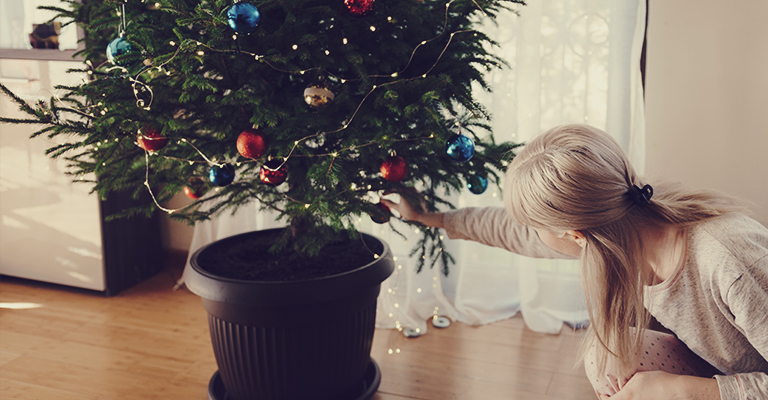
When the time comes to choose your Christmas tree, potted firs are an interesting alternative to cut or artificial trees. Indeed, they are esthetically pleasing with their decorative pots, and they also offer a significant ecological advantage: they can be transplanted in the garden!
Here are 9 tips that will help you plant your potted fir outdoors come spring.
1. Watering when indoors
Your potted fir doesn’t like the heat. Make sure to water it on a regular basis while it’s indoors. The perfect place is near a window and away from sources of heat.
2. Preparing your tree for transplanting
Remove all ornaments and cut dry or damaged branches so your tree is ready to be transplanted.
3. After the holidays
Once the holidays are over, or even before if you like, acclimate your tree to the cold by placing it in the garage or another cool place.
4. Where to plant it?
Find a dry place that offers partial shade, where your tree will be protected from cold winds. This should do the trick!
5. Preparation
Dig a hole twice the size of the root ball. Loosen up the soil, bring a good mix and add a little sand to it. Spread our TREE & SHRUB mycorrhizae at the bottom of the hole to accelerate recovery from transplant shock.
6. Planting
Place your tree at the centre of the hole, making sure the lowest branches are close to the ground. Fill the hole around the roots and compress lightly. Once the hole is full, water thoroughly, even if the soil is moist.
7. Watering
In summer, water your tree’s foliage often. It’s also important to do it every night when temperatures have reached more than 25 °C during the day. This way, you can prevent spider mite infestations. Watering won’t be necessary in the winter when temperatures are below the freezing point.
8. Pruning
Firs don’t need constant pruning. Only get rid of the branches that are damaged. Pruning can also be done to give a tree a certain shape.
9. Additional information
Only potted firs or those that still have roots can be transplanted afterwards.
Subscribe to our newsletter to receive our gardening tips, news and more directly in your inbox! Fill in the form below. Please note that fields with an * are required.